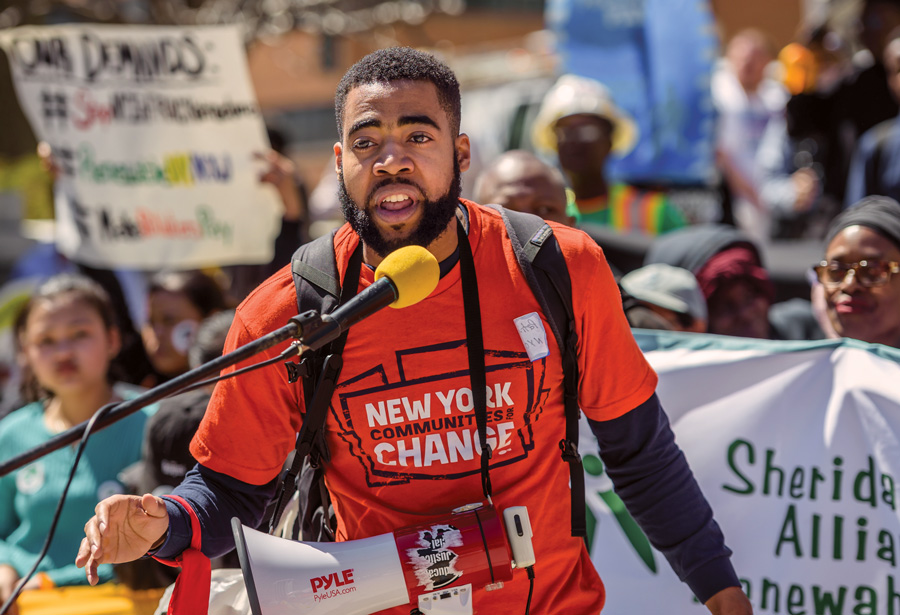
all hands ON DECK
Listen to this article
Unfortunately, by the time her son is her age, it’s possible the neighborhood could be underwater.
Sandy was just one in a barrage of recent record-breaking disasters related to climate change. Each of the past four decades has been hotter than the one that preceded it, and the seven hottest years in recorded history occurred within 2014–2020.
The climate emergency is merciless and rapidly advancing. It requires all hands to fight against the systems and institutions exacerbating it, and to work for the measures to mitigate it.
As the climate and inequality campaigns associate at New York Communities for Change (NYCC), I play a role in engaging communities in this advocacy and direct action to advance solutions.
When I graduated from Swarthmore, I had a respect for the activism that enabled the paradigmatic shifts of the civil rights era, but I didn’t fully appreciate its necessity today. Sure, grassroots activism was cool, I reasoned, but it was professionals in government agencies, consulting firms, and think tanks who made the big decisions.
However, for all of the valuable climate-action work carried out by institutions, they’re fundamentally incapable of ushering in the scale, speed, and scope of change that the climate-science clock requires. Until, that is, the ground beneath them shifts.
Since Sandy, as that Queens homeowner has fought to fend off pre-foreclosure and to secure additional income, she’s somehow also made time to fight alongside NYCC to advance climate action. Through rallies, lobby meetings, marches, calls to representatives, and electoral primaries, she’s had an outsized impact on climate action in New York.
Singularly, her relatively simple steps might appear futile. But as part of strategic, collective actions, this 67-year-old, high school-educated, Black child-care provider is helping move mountains, both ideological and tangible. In the past five years, she has played an integral role in our victories, including rejection of permits for a proposed gas pipeline, city and state pension-funds divestment from fossil fuels, and passage of the landmark NYC law to cut pollution from the city’s biggest source of emissions, buildings.
All grassroots climate campaigns aren’t created equal. But the analytical skills imbued in our College educations should help guide most Swarthmoreans into smart, strategic, coherent campaigns. Join an organization in your locale to support action at scale. This often requires striking fear in the hearts and minds of culpable decision-makers: those whose allegiance to quarterly earnings or fossil fuel contributions inhibit action on the most consequential challenge humanity has ever faced.
The emergency grows more dire, and we must not leave it to the most marginalized and vulnerable to carry the weight of advocating for transformative solutions.